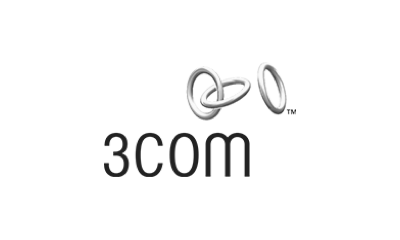How to Build Software UX That Will Make People Salivate Over Your Next Software Project
Posted by Tech.us Category:
Before the digital transformation of the last decade, the internet used to be a different place. It wasn’t as widely used, nor were the websites developed during that time such a breeze to use. Something happened in the last few years to change that, and that something is the popularity of UX design technology.
Since the idea was presented, more and more people warmed up to it. They could see the benefits of creating websites, not with the designer, but the user in mind. Not only that — they could also see the profitability and the potential for business growth of such an approach. UX has been the driving force for the majority of UX designs, but many experts still see it as an elusive force because of its subjectivity. To date, there aren’t any set parameters to evaluate how effective a UX design is, but that doesn’t mean people haven’t attempted it — or come up with various methods to ascertain performance regardless.
Today, we’ll talk about making a seamless UX design that blows your users away!
What is UX Design?
UX stands for user experience. Typically, UX designers aim to improve user experience by evaluating:
- How users feel about a website or app.
- How easy it is to use.
- What utility it offers to the users.
- How efficient it is.
- What value it adds to the user’s lives.
UX designers aim to make using a website or app as easy as possible for the user, while at the same time making sure they’re provided with everything they visited the website for.

Things To Know About UX
UX used to be simple once. Designers just did what they thought was best, and what they felt the user would want to see. Of course, this kind of approach is now outdated and frowned upon. Today, designing a website means putting the potential users first, carrying out the right research, and finding the answers to questions like “what do I want my user to feel like when they visit the website?”

No Two Websites Have the Same UX
Every website is built differently, and no two websites would ever have the same user experience. This is also why you can’t use the same UX design or plan for them both either. Even if the websites are similar, or serve a similar purpose, they belong to different organizations with a different brand image and a different product to sell.
Each of these variables makes it almost impossible for two websites to have the same UX.
UX Is Not the Same for Everyone
Even on a single website, every user will have a different UX because they’re looking for different things and have different personal preferences. You can’t satisfy everyone with the same UX, so it’s a better idea to focus on providing a good user experience to the majority.

UX and Usability Are Not the Same
Both these terms are usually used interchangeably, but they’re not the same thing. Usability refers to how user-friendly an app or website is, while the user experience goes beyond simply that. It can be said that usability is just one very important part of UX, but not the whole picture.

UX Can’t be Assessed Directly
The effectiveness of a good UX design can’t be assessed in quantitative terms, which is one of the reasons why many people in the world of software development refuse to take it seriously. But the more practical and progressive designers can’t find fault in the logic behind putting the user and their experience first when designing a software.

UX Goes Far Beyond Simple Design
The objective of a UX designer isn’t just to make a website or app fun and easy to use. Their job goes far beyond that into making sure each software is adaptable to all different modes of usage. UX designers strive to make the app accessible to all kinds of users, whether they’re using conventional technology or not.
They aim to make a website usable for people with certain disabilities by making them compatible with screen readers and making sure they’re usable on older phones and laptops.

Who Benefits Most From UX?
The end-user, of course, is the one everyone is thinking about. But if we look at it from an entrepreneurial point of view, we can see that certain organizations could use the extra help UX design provides more than others.

Startups
When you’re just starting out to establish your organization or product in the world of business, you need to take every advantage you can get. Optimizing your website for the end consumer can help you stand out among the crowd.
Most startups don’t have the budget to hire a UX specialist, but you always have the option of bringing in some freelance talent or investigating whether certain agencies can do the job for you as you want. Another option that small organizations opt for is providing training for their current software designing staff, so they can essentially perform more than one task and save your startup some money.
Complex Systems and Websites
Complex websites like e-commerce stores or interactive websites are the kinds of websites that don’t usually perform well without a UX check. If your website goes beyond simply providing your users with information, consider hiring a UX designer or outsourcing a UX design team to go over your website and app for you before their launch.

What Does Good UX Look Like?
Before we jump into how it would be a good idea to analyze what good UX design on a piece of software brings to the table. A website with a good UX design is:
- Usable: It doesn’t require too much hard work to use, as all the options a user could want are placed in visible positions and everything is predictable.
- Desirable: By this, we certainly don’t mean the users should fall in love with the site, but they should be pleasantly surprised. Opt for a good aesthetic and minimal design, and don’t forget that many internet users today browse the internet on their phones, so the website should be smartphone compatible.
- Useful: Part of improving the UX design of a website is to make it useful for the user. They should be able to easily do what they want, and the website should be able to provide them with options they’d expect to find on a website like yours.
- Credible: If you’re focusing on an e-commerce website or a website with specialized information, you should make sure the users are inclined to trust it. You can do this by putting your certifications, client reviews, and testimonials on the front page. Eventually, your brand image and reputation should automatically be able to lend credibility to your website.
- Accessible: As we talked about before, a good user experience included experiences for people with special needs, accessibility issues, and those using the internet via older technology.
- Findable: Things on your website should be easy to find for the users. In the world of website design, there is such a thing as taking innovation too far. Don’t change the design so much that users aren’t even sure anymore what is where.

How to Build Amazing Software UX
Building software UX isn’t as simple as it sounds — that’s the whole reason some people specialize in it. Many big and successful corporations employ UX designers to ensure their websites and apps provide the greatest value to their users, and you, too, can take a page out of their books while you work.

Put Yourself in the User’s Shoes
One of the first things you should ask yourself while creating a UX design is this: what does the user want to see? When you put yourself in someone else’s shoes, you can determine what they want. Entrepreneurs and businessmen have been using this technique for ages to grow their businesses and determine what the customer wants, but it’s not mere guesswork.
Two of the most used strategies to determine what your customers want are to use buyer personas and to rely on research.
Buyer Personas
Countless organizations all over the world have detailed files on what their customers are like, complete with demographics, ambitions, wants, needs, personality, and many other things. These personas may be imaginary, but they’re usually made with a lot of thought going into them. Take advantage of these personas and determine what kind your company’s customer would want from your website.
Lean on Research
Instead of doing mere research, delve deeper into research and statistics to determine what problems users usually have with similar websites, what they wish to see from your organization, and what your organization has promised them.
If your own company doesn’t have a wide enough customer base to carry out this research, pull out similar studies carried out by other companies and independent resources.
What Do You Want Your Customer to Feel Like?
Of course, happiness and positive emotions are well and good, but that’s too simple of an approach. If you’re making a website for an arcade and laser tagging establishment, you most likely want your users to feel excited and pumped up. But you definitely don’t want to go for the same approach while designing the UX for a high-end jewelry boutique’s website.
Lay Out Usage Maps
Once you’re done thinking about what your users want, and what emotions you want them to experience with your UX design, it’s time to focus on the usage maps.
Ideally, every action on your website should take around five steps to take. If you want them to make a purchase, your UX usage map would be:
- User lands on the homepage
- Clicks the menu.
- Goes to “Make Purchase”
- Selects options
- Makes the payment
Not every step needs to be a single click, though. Steps like “selects options” and “makes payment” may take more clicks, but the overall experience should be quick, smooth, and easy.

User Testing is Key
Once your UX is ready, never skip the user testing phase before the actual release. The user testing phase is one of the most important, but it’s also one of the phases most organizations are tempted to skip in favor of an early release.
Avoid Technical Jargon
Avoid putting too many complicated and technical words in your website — unless you’re making one specifically for certain professionals. Most organizations intend their websites to be used by everyone, which means that users can be put off by complicated language they don’t understand. As a general rule of thumb, keep the website simple and efficient.
Provide User Control
While using the website, the user should feel like they’re in control of the situation. This helps build their confidence and keep coming back. If they feel like they’re just being strung along on a website from the moment they land on the homepage to the moment they leave, they’ll most likely stay away. You can do this by providing “undo” and “redo” options when asking users to fill forms, always keeping a “back to homepage” button visible, and assuring them that even if they made a mistake, there is a way out of it.
Error Prevention
For your users to have a positive UX on your website, they need to perceive it as professional, good quality, and more than satisfactory. All these things can be achieved by being careful in the design stages and having other people go through the final version. A fresh set of eyes can be instrumental in picking out mistakes you might have missed.
UX Design, Good or Bad?
One of the biggest objections businessmen have with investing in UX design is that they’re spending money on something that isn’t objectively measurable. However, many have seen a notable difference in the performance of their websites before and after they hired a UX designer to go through it.
UX design doesn’t always have to come at the cost of an in-house expert, however. You can hire freelancers on a one-off basis or save a lot of expenses by outsourcing your UX needs.


Trusted by:






We are a team of technology experts who are passionate about what we do. We LOVE our customers. We LOVE technology. We LOVE helping you grow your business with technology.
Our Company
Our Services
Talk To Us
We are a team of technology experts who are passionate about what we do. We LOVE our customers. We LOVE technology. We LOVE helping you grow your business with technology.
